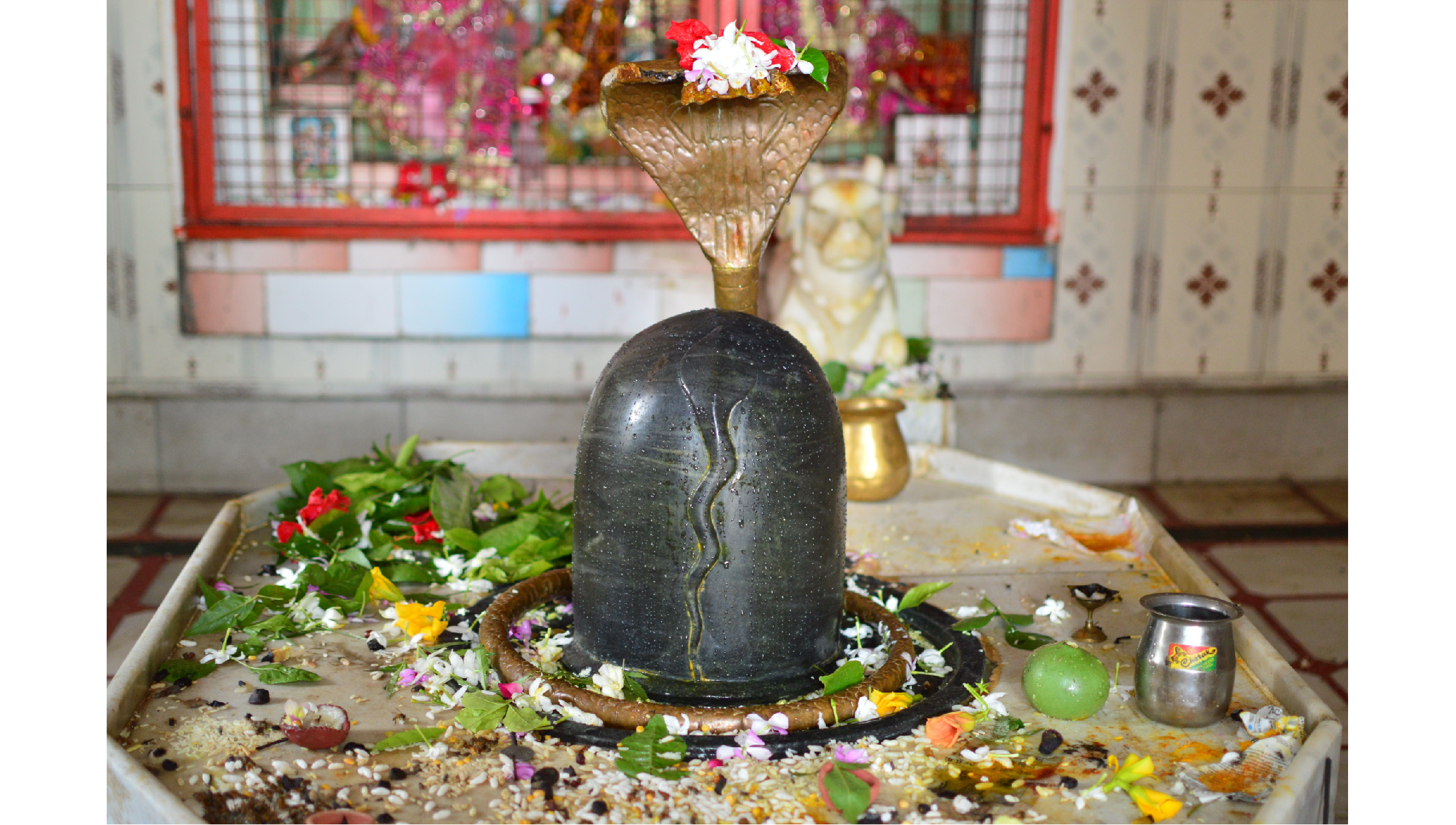 The lingam is a ‘nishkal’ form of Lord Shiva. Various forms of the lingam are depicted but the most common one is the shape of a vertical rounded column. The first lingam was a column of fire that appeared during the time of creation.
The lingam is a ‘nishkal’ form of Lord Shiva. Various forms of the lingam are depicted but the most common one is the shape of a vertical rounded column. The first lingam was a column of fire that appeared during the time of creation.
Story has it that once Lord Brahma and Lord Vishnu had an argument over who held the reins of supremacy. Brahmaji, being the Creator, declared Himself to be more revered than Vishnu Bhagavan, the Sustainer, who claimed that He commanded more respect. Soon a battle ensued which went on for some time. Just then a glorious form of a blazing pillar of fire of immeasurable size stood before them. The war immediately stopped as both of them were awestruck by its colossal size. They were determined to find out more about it.
Vishnu assumed the form of a boar and went to the netherworld while Brahma appeared as a swan and flew up to the skies. Both returned after some time, exhausted and unsuccessful. Then Shiva Bhagavan Himself appeared out of the column of fire and said that He was the progenitor of them both and that he should be worshipped in this form of the lingam. Offerings of bale leaves, flowers and other articles were made as the lingam was worshipped.
One of the meanings of the name Shiva is auspiciousness, and lingam means symbol. Therefore, the Shiva lingam is a symbol of Shiva, who is all-auspiciousness. Some characteristics of the Shiva lingam include:
1. It symbolises the formlessness of the Supreme Shiva, the substratum, from whom everything emanates and into whom everything eventually merges.
2. It denotes the attributes of the Lord in His many manifestations.
3. It is the mark of Shiva, the Creator, Sustainer and Destroyer.
4. It is representative of the link between the manifest universe and the unmanifest, that is, the unseen cosmic realm.
5. It symbolises the eternal, imperceptible nature of time.
The Shiva lingam rests on a ’yoni’, symbolic of the energy or ‘shakti’ of Shiva. This symbolises the creation of the universe which is effected by Shiva in conjunction with his ‘shakti’. It also instructs man that the journey towards spirituality, to the state of non-duality , is the journey leading to the merging of Shiva and Shakti.
The worship of Bhagavan Shiva on the Shiva lingam is most efficacious, especially during the auspicious occasion of Mahaa Shiva Raatri. Offerings of abhishek, flowers, bale leaves, Prasad and other ingredients can be made.


